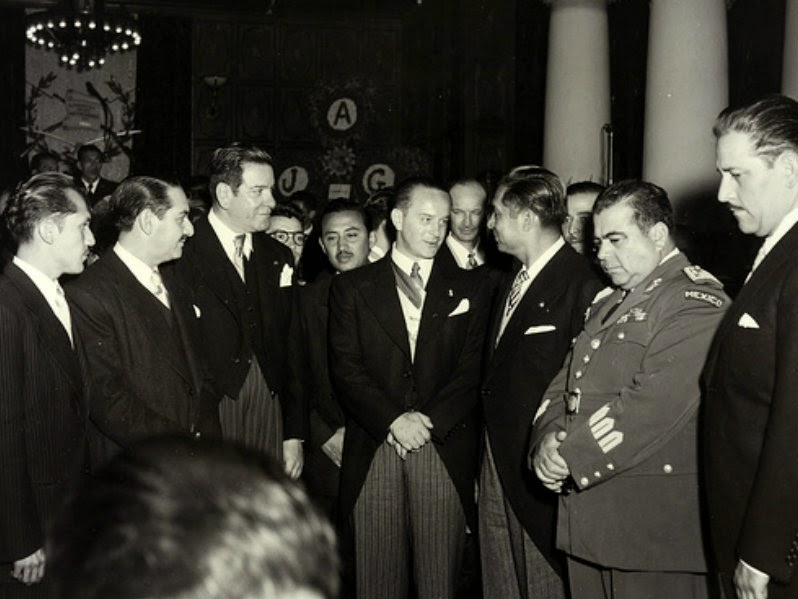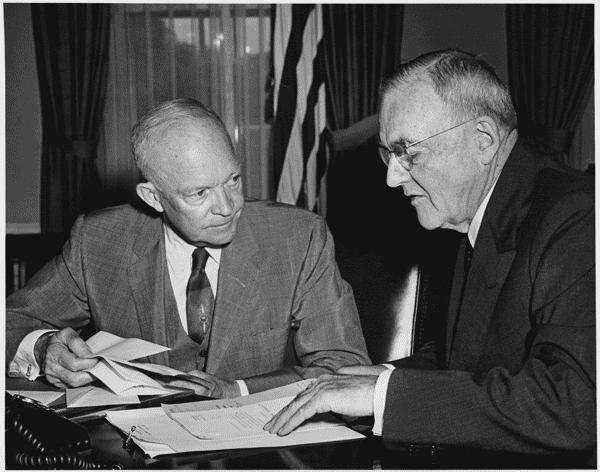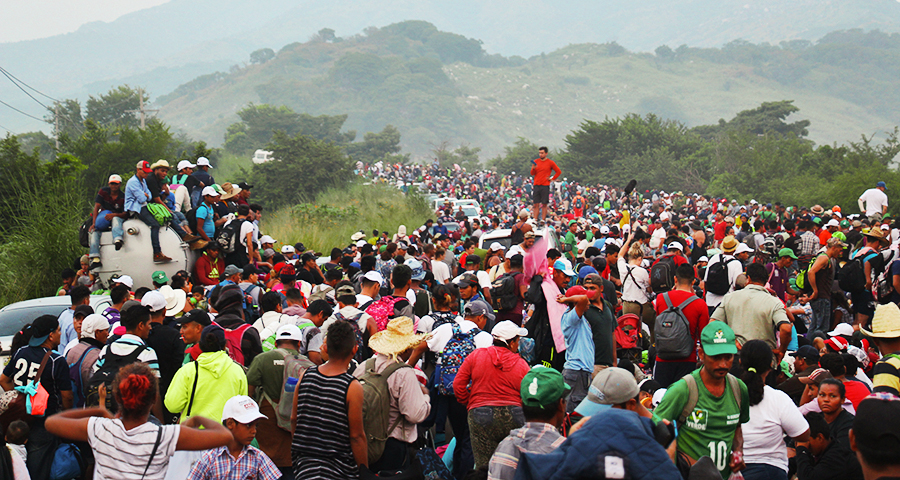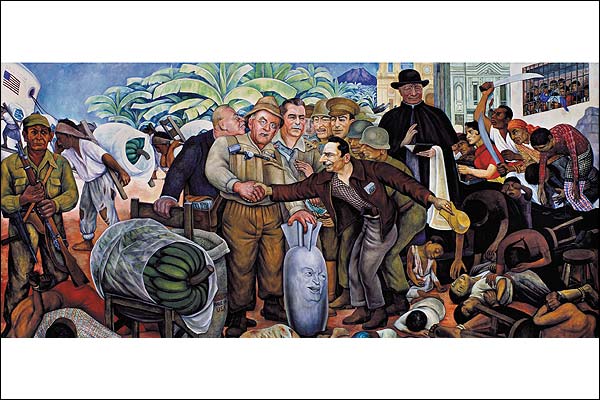A key person in the armed conflict and the transition to peace in his country: he was a guerrilla fighter, directed the Rigoberta Menchú Tum Foundation and from 2005 to today he is responsible for the Historical Archive of the National Police .
Guatemala has been known across the world as “The Land of Eternal Spring”; and as “The Land of Eternal Tyranny”. Given this, it is no surprise that the short period of progressive government, between 1944 and 1954, is recognised as the Guatemalan “Democratic Spring”. And indeed it was. Following a century of successive dictatorships, of different lengths but similar levels of injustice and brutality, the democratic revolution of 1944 took place and the conditions were created for the constitutional governments of Juan José Arévalo and Jacobo Árbenz to achieve true historic progress.
In those 10 short years, Guatemala advanced as a nation more than it had done in the preceding four centuries, with milestones such as university and municipal autonomy, public education and health, social security, a labour code, votes for women, rights for indigenous peoples, the country’s sovereignty and its unlimited international relations, and, above all, agricultural reform.
All this makes it possible to understand the historical implications of the US intervention of 1954, which cut off this process with one fell swoop and paved the way for the long and terrible process of successive overtly military governments until 1985, and the managed democracy that has lasted to the present day. We now know that the whole web of intrigue, destabilisation, sabotage, terrorism, treachery, military buyouts and the strangulation of the economy, concentrated in the covert operation PBSUCCESS, was part of a long-term global trial, and that the Guatemalan experiment was repeated in different latitudes to overthrow insubordinate governments.
However, information collected from various archives has revealed that this was not the only terrible test that the US carried out in Guatemala. At least three such brutal experiments carried out in this small Central American country have been identified: 1946-1948: the inoculation of syphilis and gonorrhoea to thousands of Guatemalans to study the impact of penicillin; 1954: the overthrow of the democratic government of Jacobo Árbenz; 1966: the systematisation of the methods for the creation of death squads, mass kidnapping of political opponents, torture until the death of those abducted, throwing the bodies of the victims into the sea, and the perpetration of forced disappearances.

1946-1948: Human experimentation in the name of science and the free world
In September 2010, the discovery made by Dr Susan Reverby in the archives of Pittsburgh University, who found the personal file of Dr John C. Cutler containing records on medical experiments conducted in Guatemala in the second half of the 40s, came to light. A few days later, Guatemalan President Álvaro Colom received a call from the President of the United States, Barack Obama, in which he offered his apologies for the fact that vulnerable Guatemalans had been infected with syphilis, gonorrhoea and chancroid without their consent, within the framework of an agreement on medical assistance financed by the United States Government between 1946 and 1948.
Since 1932 in Tuskegee, Alabama, the Government of the United States had organised and financed secret trials on African-American prisoners, who they inoculated with sexually transmitted diseases in order to experiment with diverse types and doses of medications, or simply to observe and document the evolution of the disease without the administration of any medication. The Second World War contributed to an increase in interest in these experiments due to their potential usefulness in the prevention and treatment of venereal diseases among US troops.
The refinement of penicillin at the beginning of the 40s, with all its economic and military implications, catapulted the commercial interest of the pharmaceutical industry and increased the strategic importance of medical experiments on human beings. Nevertheless, at the end of the war, and given the imminence of the Nuremberg Trials, it became dangerous to proceed with experiments on African Americans. And it is here that Guatemala appears as an ideal place to continue the trials and carry out further tests, taking advantage of the existence of a largely indigenous, illiterate and under-informed population.
Aware of President Juan José Arévalo’s ethical stances, the US agencies responsible for the experiments wove a web of complicity and corruption among second- and third-line officials in order to use state resources as they pleased and to ensure the necessary discretion and disinformation.
The experiments consisted in cultivating syphilis, gonorrhoea and chancroid in humans and animals, to later inoculate at least 2,082 men and women lacking the freedom and knowledge to oppose it: prisoners incarcerated in the Central Penitentiary, the mentally ill in the Neuropsychiatric Hospital (the then-called Lunatic Asylum), indigenous soldiers in the “Honour Guard” barracks, and women involved in prostitution controlled by the police and health authorities. These experiments were expanded to 515 orphaned children within the National Orphanage and 151 school children from the town of Puerto de San José on the south coast.
In some cases, those inoculated were treated with different doses of penicillin and treatments of varying duration; in others they simply recorded and studied the evolution of the illness without the administration of any medication. In all cases, deception was involved, as no one was informed in advance or asked for their consent. In no case were measures taken to prevent infected people from becoming vectors for the spread of the diseases. It is therefore safe to say that the number of victims multiplied with the return of soldiers and convicts to their homes in rural areas and the army, and the prostitution of infected women. Upon death, many of the victims of the experiments underwent autopsies to analyse the internal effects of the disease.

1954: Guatemala’s watershed
The records belonging to the archives of the CIA, the State Department and Congress, declassified and made public in the United States, provide proof that the CIA planned, financed and led the execution of the covert operation named PBSUCCESS. Today, it is known that with a budget of three million dollars, numerous US agents conducted a simultaneous programme of economic, psychological, diplomatic and paramilitary actions designed to isolate the Government of Árbenz and cause dissension, confusion and terror within the ranks of his supporters. The radio programmes, recorded in Miami and broadcasted from Honduras, aimed to persuade Guatemalans that internal opposition to the Government was growing, and urged soldiers to revolt against the Government, which they branded as communist.
The United States Navy imposed a blockade on all maritime trade entering Guatemala, and US planes scattered propaganda and strafed key locations in the country’s capital. The CIA directly drew up lists with names of Guatemalans who had to be got rid of through exile, prison or assassination after the triumph of the counter-revolution. The covert operation culminated in a coup d’état perpetrated by the military high command. From here on in, the Army became the principal executor of the policies established by the United States, their businesses and the Guatemalan oligarchy. 1954 marked the crossroads that led the country along the route of militarism, repression, corruption, civil war, State terrorism and genocide.

Public domain, Wikimedia Commons
1966: Guatemala, the US terror laboratory
As various authors have documented, in Guatemala in 1966, the structures, methods and practice of death squads, mass political kidnapping, unlimited torture and the definitive disappearance of political prisoners, throwing them – dead or alive – into the sea or into the crater of an active volcano, were systematised.
Paramilitary groups have always existed across the world. However, the novel method initiated by the Guatemalan Army in 1966 was the creation of structures that were illegal and secret, but at the same time organic, disciplined and vertical, charged with carrying out the abduction and assassination of opponents, or those suspected of being so. Thus, repression no longer stopped at formalities, laws or institutions of any kind. For the purposes of propaganda, the method included a public discourse of condemnation in order to feign dissociation and official innocence.
Coupled with the fact of political abduction (in less than 48 hours 35 opponents were illegally captured), in 1966, the practice of torture also saw a brutal escalation. With the explicit determination that those abducted would never appear alive, the limit of torture came only with the death of the victim. In order to extract the information desired by the repressors, the persecutors could even kill other abductees in front of the prisoner in a bid to break their will. In many cases, blaming the death squads, tortured and mutilated bodies appeared in public locations, chosen to amplify the message of terror.
This method of forced disappearance was fully established through the burial of the bodies of those abducted in clandestine graves, or throwing them into the sea or the crater of an active volcano from aeroplanes and helicopters belonging to the Air Force.
This combination of methods was further refined in Guatemala between 1966 and 1970, with the direct participation of US advisors from the CIA and Pentagon. In this way, Guatemala functioned as a laboratory for the systematisation and refinement of procedures of repression and terror, which the US advisors later transmitted to other armies on the continent. The School of the Americas, Fort Gulick, Fort Benning and Fort Leavenworth were some of the training facilities used for this purpose by the United States Army. Since 1975, several hundred military personnel from various countries have undertaken the “Kaibil” training course in Guatemala, in the training facility officially known as “Hell”.
In the light of these experiences, it is necessary to ask ourselves about the strategic objectives of the United States in expanding the use of these methodologies and increasing their intervention in Latin America. Much has been written about the US strategy and the relationship between the support for military dictatorships, the expansion of these methodologies of terror, and the plans to discipline the economy and politics of the countries of the subcontinent to follow the new order resulting from the Cold War. Today, the sequential relationship between the application of the National Security Doctrine, the expansion of neoliberalism, and the proclaimed globalisation achieved towards the end of the 20th century can be seen with greater clarity.
Yet what is most serious, is that at this point in the 21st century, Guatemalan soil continues to be a laboratory for new US experiments. Nowadays, these trials have to do with moving the southern border of the United States to the frontier between Mexico and Guatemala, with the aims of keeping drug trafficking activities and routes under control, and stemming the flow of migration to the north. In July 2019, the Administration of President Trump conditioned the Guatemalan Government to sign a “Safe Third Country” Agreement, through which the small Central American nation committed to receive and detain migrants of any nationality seeking asylum in the United States.
In February 2021, the Biden Administration put that diplomatic monstrosity on hold, but no one knows what new trials are in the pipeline. Sadly, it would seem that what took place in the past is still happening now.

References
- “Pbsuccess, The CIA’s Classified Account of its Operations in Guatemala, 1952-1954”. Nick Cullather. Avancso(2002).
- “Denied in full, Released United States Documents”, Greg Grandin. Avancso (2001).
- “Of centaurs and doves: Guatemala’s peace process ”. Susanne Jonas. Flacso (2000).
- “Consenting the harm: United States Medical Experiments in Guatemala, 1946-1948”. Presidential Commission for the Clarification of the Experiments Practiced on Human Subjects. Government of Guatemala. (2011).
- “La nueva organización anticomunista (NOA). Historia represiva de un escuadrón de la muerte para estatal”. Carlos Fernando López de la Torre. Cuadernos Inter.c.a.mbio (2018)
